How to order a walk in glass block shower system

I don’t mean to be Bob Braggadocios, Ernie Egomaniac, or Ned KnowItAll but I’ll bet our company has helped more homeowners, contractors, and builders with glass block walk in shower systems since our business was founded by my Dad in 1977 than any other company in the United States.
And I’m not telling you this to get a pat on the back. I’m telling you this because (unfortunately) there’s not many people who know what they’re doing helping customers order a glass block walk in shower.
And since they’re ‘newbies,’ they’ll either give you wrong advice (and you’ll have expensive mistakes you foot the bill for), or they try to persuade you NOT to use glass blocks because they don’t know what the ‘H-E-double-hockey-sticks’ they’re doing.
And – since a glass block shower does take more planning than buying a standard glass shower kit, you need to be more thorough and thoughtful to get it right. So, towards that end, I’ve organized this article in 4 parts.
- Part 1 – Why you should buy a glass block shower.
- Part 2 – Why you need a plan before buying ANYTHING.
- Part 3 – 13 questions to ask before spending money on a glass block walk in shower.
- Part 4 – A 4-step process to order your glass block walk in shower.
So, let’s dig in.
Part 1 – Why order a walk in glass block shower system?
I want to be real with you and say designing and installing a glass block shower will take more planning than a ‘standard’ glass shower because it’s more unique. So, if you’re going to take the ‘road less traveled,’ it’s important to know what are the benefits of ordering a glass block shower vs. a traditional shower with a glass enclosure. Here’s 7 advantages to keep in mind.
- Advantage #1 – Glass blocks come in multiple styles, patterns, and shapes. If you DO NOT want a shower which looks like everyone else’s – glass blocks are a fun way to go.
- Advantage #2 – It’s hard to see water spots on glass block shower walls. If you’re the unlucky one who ‘gets to’ clean your glass shower door today, you know using a squeegee on glass shower walls and doors and ‘trying’ to clean spots off clear glass can be difficult to impossible.
- Advantage #3 – You’ll get rid of glass shower doors – Glass shower doors aren’t cheap and can become pitted, permanently spotted, and a trip hazard. A glass block walk in shower eliminates the door.
- Advantage #4 – You can make wild designs – Do you think it was impossible to make a curved or serpentine wall out of glass? Think again. With glass blocks you can make mind-blowing designs.
- Advantage #5 – The wall can be built in easy to install sections – The biggest reason builders, contractors, and homeowners worry about doing a glass block shower is they’re concerned it’ll come out all ‘catawampus’ (truly one of the funnies words out there!). However, with a prefabricated glass block wall system, installing can be as simple as putting LEGO blocks together.
- Advantage #6 – You want a sturdy wall – Since glass block shower walls are 3 1/8” thick and anchored into the side wall – they will not fall over if you stumble in the shower.
- Advantage #7 – You want a high privacy wall – Since most glass block patterns distort the view, you’ll have more privacy with a glass block wall than with a clear glass shower door.
Part 2 – Why you need a plan before buying any ANYTHING (Ok, it’s so you don’t screw up).
Did your grandparents ever tell you to make sure don’t put the ‘cart before the horse?’ And – unfortunately over the years I’ve seen many people put the (proverbial) cart before the horse in doing a glass block shower and waste A LOT of money.
I’ve taken calls from homeowners and builders excited to tell me they’ve already built their shower pan and are now looking to buy a glass block wall. I cringe when I hear this. I’m worried the glass block wall they want won’t fit their shower pan.
There’s nothing worse than ‘delivering the bad news’ their well-intentions efforts are going to hurt their plans (and/or costs more money). And because me and my team have seen so many mistakes over the years, we even created this video titled, Glass Block Shower Wall and Pan Mistakes to Avoid.
And here’s things you’ll learn in this video so you can put ‘the horse before the cart (or the planning before the buying):
- Why it’s smart to buy the shower pan AND the glass block wall together.
- Why you want to identify which glass block sizes and shapes can be used together.
- Why you DO NOT want to build a shower pan, then look for glass blocks which work with your pan.
- Why you shouldn’t use silicone joints between the glass blocks.
- Why you shouldn’t attempt to find a mason contractor to build your wall.
- Why it’s possible to DIY a curved glass block wall.
- Why you DO NOT want to use ‘old style’ 4” thick glass blocks.
- Why do you DO NOT want to assume your general contractor knows what they’re doing (and I mean no offense to general contractors in saying this).
Part 3 – 13 questions to ask before spending money on a walk in glass block shower system.
The worst thing you can do is to spend any money on a glass block shower then find it’s not working out the way you’d like. And to make sure this won’t happen to you, ask the following questions:
Question #1 – Where is the shower going (in a corner, in an alcove)? How much space do you have? Is there enough room for a glass block shower?
Before you get too far, you want to make sure your glass block shower won’t be an ‘elbow-banging’ experience because the shower is too shallow, or the glass block wall is too short and water spills onto the bathroom floor.
The minimum depth of a glass block shower Id’ recommend is 32.”
Regarding the size of the glass block wall – if you’re looking to shower behind the wall, the smallest width I’d recommend is 24”.
Question #2 – How big would I like the walk in shower opening to be?
While you need the size of your shower opening to work for the people using the space, you also don’t want it to be too big or too small. And if you need help figuring this out, read 5 Proven Questions to Get the Size of your Shower Opening Right.
Question #3 – What’s the best shape for the glass block wall(s)? Will it be a corner shower or an alcove shower?
If you’re designing a glass block shower in an alcove (and if you’re unsure what an ‘alcove’ shower is, it’s a shower which has glass along the front (usually) and 3 interior shower surrounds once you walk in) make sure the wall along the front of the opening will either be wide enough – or shaped correctly – to keep water in.
And if you have a space which is 56” wide or less (for the glass block wall and the opening), I’d recommend using a curved glass block wall, so it’ll keep the water contained in the shower.
As the width in the front gets larger, it more practical to use a straight glass block wall. The advantage of the straight wall is you can use more complicated glass block patterns and the shower pan will be simpler and more cost-effective.
Question #4 – Would you like to use decorative pattern or colored glass blocks?
The only glass blocks which are made for curved walls is the standard ‘wave pattern’ blocks.
So, if you absolutely love, love, love decorative pattern or colored glass blocks, get input from a glass block designer to see if a straight wall will work for your project (and do a decent job keeping the water inside – see question #3 again).
Question #5- What’s the approximate height you’d like for your glass block shower wall?
Many glass block walls include the finished rounded end blocks which only come in 8” (or the metric size which is 7 ½”) heights. So, if you’re looking to use finished blocks on the end, you’ll need to work in 8” height increments.
And since some glass blocks don’t have ‘finished’ edges at the top, 80” high is the most common wall height because then you won’t see the unfinished top and the wall is too tall for water to come over the top.
Question #6- What material are you going to use between the glass blocks?
If I’m being honest (and I have NO REASON to NOT be honest with you), there’s very little to go wrong with the glass blocks. They’re thick. They’re durable. They’ll stand the test of time (unless you have an earthquake, then all bets are off!).
However, there’s much more which could go wrong with the joint between the glass blocks and how they’re assembled.
Over the years I’ve seen mold between glass blocks in a shower. I’ve seen rusty metal between the blocks. And I’ve seen jobs put together with silicone where the wall moves from side to side.
No matter what you do – be thoughtful about what you use between the blocks.
I’d recommend a vinyl stack and grout system since there’s no wire to rust between the blocks and you’ll have a tight 1/8” joint. Then I’d recommend using urethane grout between the blocks, and NOT using silicone. This stack and grout approach will not only give you an easy to install system – but also one which is sturdier than an ‘old school’ mortared glass block wall.
Question #7- What curb height do you want for the glass block shower pan – or will you use a one level wet room system instead?
For many people a key reason to get a new shower is because their existing tub (or shower) is dangerous to step into or get out of. The curb (or tub rail) is too high and there’s a risk of falling when getting in or out. It’s for this reason with glass block shower base I recommend a low profile shower pan (from 1 ½” to 2 ½” high) or a mid-height shower curb (from 2 ½” to 3” high).
And if you really want a sleek, contemporary look (and/or you’re designing your shower for wheelchair access) an accessible wet room system (where there’s no visual curb at all) can be safe and stylish.
Question #8- What finished surface would you like for your shower pan or wet room?
If you’re like me and hate cleaning tile shower floors, use a solid surface glass block shower pan instead. On the other hand, if you absolutely want the unique styling of tile, a waterproof ready for tile shower pan is a leak-proof tile option for your glass block floor.
And lastly if you need no curb whatsoever, look for a one level wet room with a finished tile surface.
Question #9- Where would you like to locate the shower drain? Would you like a ‘point drain,’ or a ‘linear drain?’
Ok – now it’s time to get really jazzed about this project. Now, we’re talking about shower drains! And although I KNOW this isn’t the subject which makes most people (except for bathroom geeks like me) all warm and fuzzy, choosing a smart drain- and drain location will either make your shower comfortable to use (and more cost-effective) …. or not.
And if you’re not busy this Saturday night – and want a fun (sarcasm intended) way to enjoy your wild and crazy lifestyle (and get advice for a better shower), read 5 Smart Tips to Stop Hating Your Shower Drain and Fighting with a Bad Location.
Question #10- What interior shower wall system should you use? What’s the best ‘backer board’ to use behind the finished walls?
While a glass block shower wall is unique, the interior shower wall surrounds are also an important feature to make a space you’ll love )when it’s stylish and easy to maintain) – or a space you’ll hate (when it’s hard to clean or becomes moldy).
And while you can use any type of interior shower wall system – the most popular choices are ceramic tile and grout free shower wall panels.
And while ceramic tile provides unlimited design and pattern choices, the grout joints surrounding the tiles can be a pain to maintain and will absorb moisture.
It’s for this reason higher style grout free shower wall panels have become an increasingly popular compliment to glass block shower walls.
Question #11- Where are you going to locate your shower handle?’
Since a glass block wall won’t slide from side to side (like a glass bypass shower door) and can’t pivot (like a pivoting glass shower door) because it’s anchored into the wall, it becomes even more important to strategize where you put the shower handles.
Since no one wants to travel into their walk in shower and get blasted with cold water when turning it on, locate the shower handle close to the opening so you can get the water warm before walking behind your glass block wall.
Question #12- Where are you going to put niches, shelves, seats, and grab bars?
If you really want your shower to function well, paying attention to shower accessories is important.
Did you include a fixed, or fold down bench seat, so a family member can shave their legs or sit and safely shower?
Did you include in-wall shower niches or shelving for soap, shampoo, and shower products?
Did you include decorative grab bars (or put wall backer behind the wall if you may want to add them in the future)?
A smart selection of shower accessories will make your glass block walk in shower so nicer to use.
Question #13- Will a glass block shower wall fit your budget?
Oh, the evil budget question. There’s not many people with unlimited budgets, and I’m willing to bet no one reading this article is included in Bill Gates or Elon Musk’s will.
So, making sure you can afford a glass block shower system is obviously important. To help you learn about the cost of a glass block shower wall read How Much Does a Glass Block Shower Cost. And while this article only focuses on the shower wall (not the shower pan or interior wall surrounds), it’ll give you a feel of the cost of one key element of the project. And if you want to learn about the cost of the entire system call 877-668-5888.
Part 4 – A 4-step process to order your walk in glass block shower system.
So, now that I’ve outlined in parts 1 through 3 the advantages of a glass block shower, the importance of planning to eliminate mistakes, and 13 questions to ask before spending money, it’s now time (finally) to look at 4 steps to order a glass block shower.
Step 1 – Order the shower base, shower drain, and glass block wall TOGETHER!
If there’s nothing you take from this article, please follow this advice. Especially if you’re installing a curved glass block wall(s), it’s essential to order the shower pan so it’s designed to fit the glass block wall. And even if you’re ordering a straight or L-shaped glass block wall, it’s smart to make sure the shower pan is designed (it’s wide enough, shaped properly, and leaves the right sized opening) to work with the glass blocks.
It’s critical to do this because glass blocks cannot be cut. So, design the shower pan with the glass block layout in mind. DO NOT build the pan first, then be a ‘hopin’ and a-wishin’ everything works out Ok.
Step 2 – Order your plumbing fixtures
Since your plumbing fixtures and valves will be installed when the walls are opened (and before wall surround panels, tiles, or a glass block wall(s) are installed), it’s important to get your plumbing fixtures ordered sooner than later. Plus, this will help you coordinate in step one the finish for your drain.
Step 3 – Order your shower wall surrounds, backer boards, and any ‘in-wall’ recessed niches
After your rough plumbing has been installed into your framed walls, it’s time to work on your wall surrounds.
So, at this point you’ll want to not only buy the finished wall surrounds (tile or wall panels are most common), but also the best backer board to support the wall panels (and any wall mounted accessories) and recessed niches if you’re creating in-wall storage.
Step 4 – Order accessories which’ll be mounted onto the wall surrounds.
If you’re using a fold down seat, wall mounted shelves, or robe hooks etc., now’s the time to get them on order.
If you need guidance where can you go from here?
Even though I’ve been selling glass block showers (for what seems like since Moses was a boy), I understand why this project is overwhelming to a homeowner, contractor, or builder. Because let’s face it – this IS NOT something you (unlike me and my team) do every day.
So, it’s OK if you want to Fuggaboutit (as New Yorkers say) everything above and go ‘Greyhound’ and ‘leave the driving (‘er glass block shower design and ordering) to us.’ I not only understand this logic, but me and my team are up to the challenge.
We’ll help design and supply prefabricated glass block shower walls, glass block shower pans, grout free shower wall panels, and accessories.
Call 877-668-5888. Ask for a glass block shower specialist (and if you’re lucky you’ll talk to Ryan, Ron, or Dylan – or if you’re REALLY UNLUCKY, you’ll get stuck with me!) or request a Free Design Consultation.
And if you’re looking for a glass block shower system installed in your home in Cleveland Ohio, call The Bath Doctor at 216-531-6085. For a glass block shower in Columbus Ohio call Columbus Glass Block at 614-252-5888.
Thanks for reading (and living through my humor),
Mike
###
If you want more advice (with less wacky humor because you’ll see the ‘buttoned-up’ business version of me) follow me on LinkedIn @MikeFoti.
And if you’re a bathroom remodeling contractor interested in being a dealer of unique shower wall panels, shower pans, glass shower door, high quality shower kits, and glass block walls, call 888-467-7488 and ask for Mike.
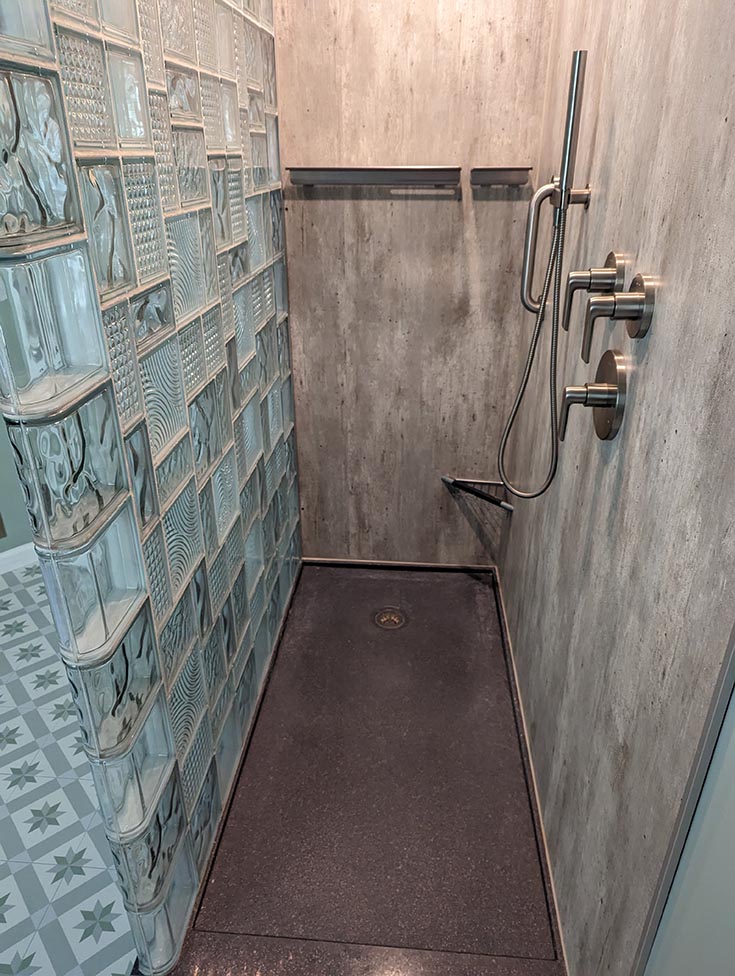
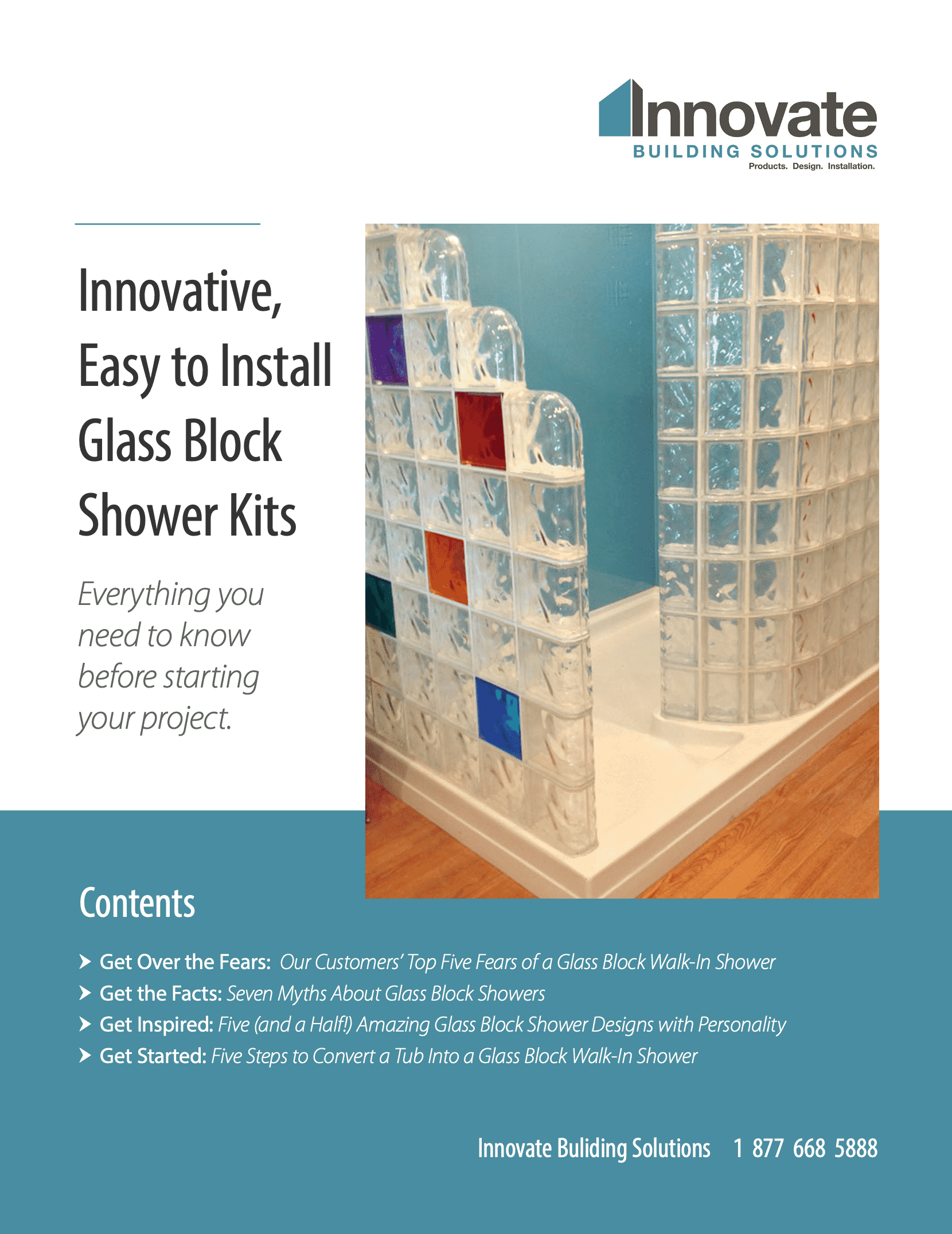
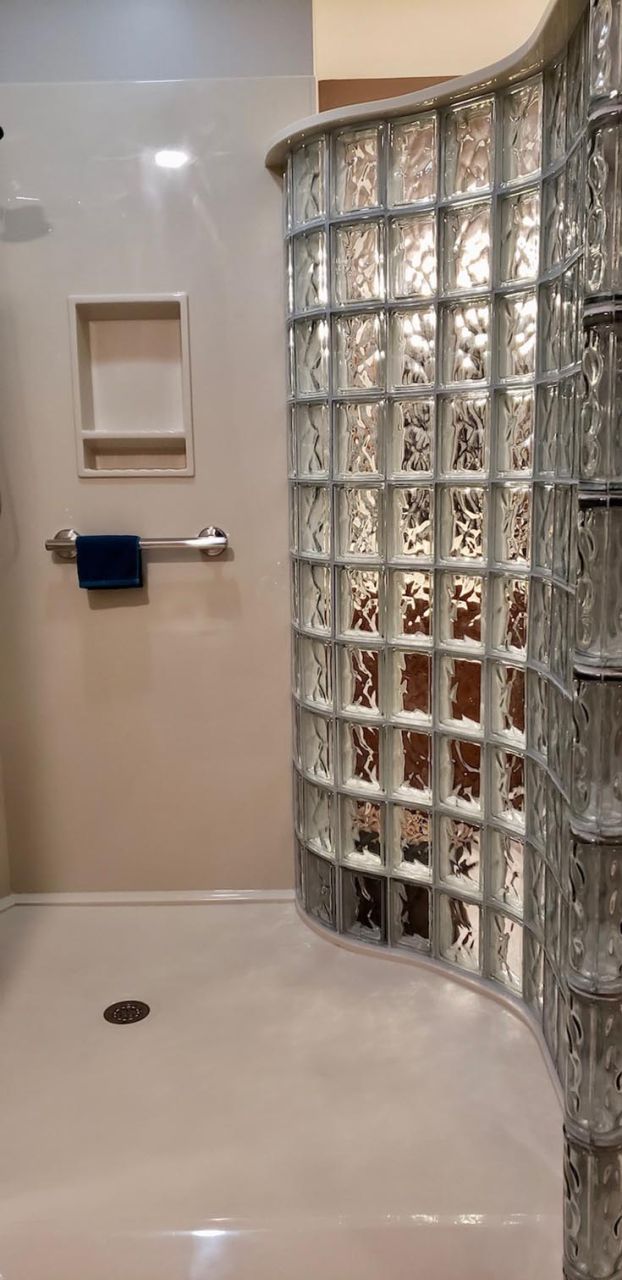
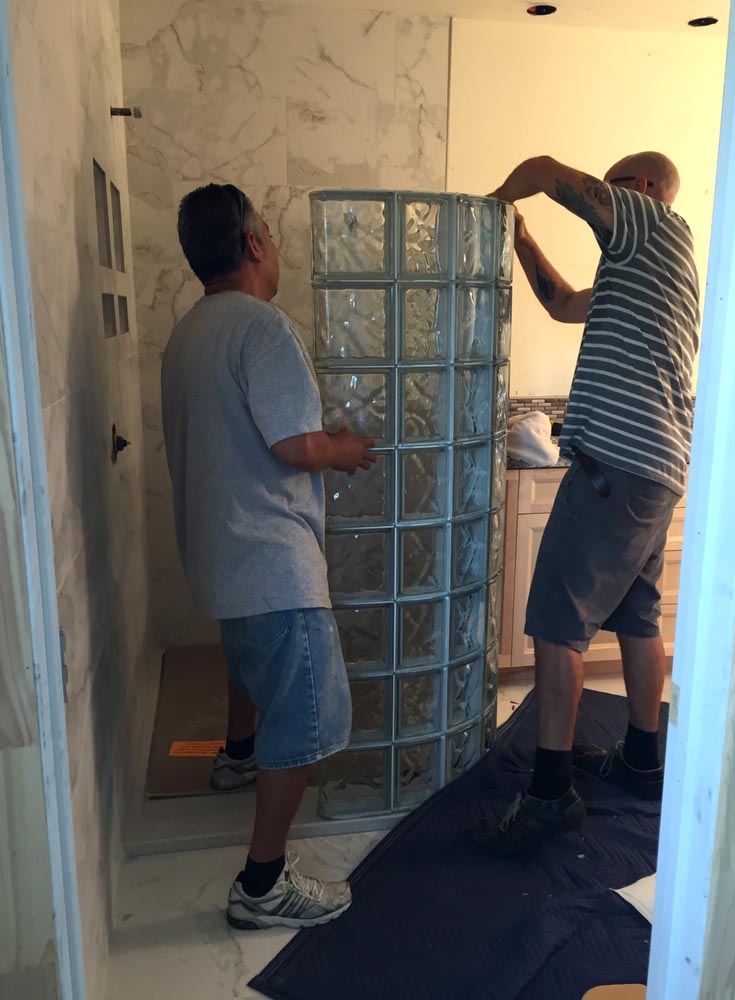
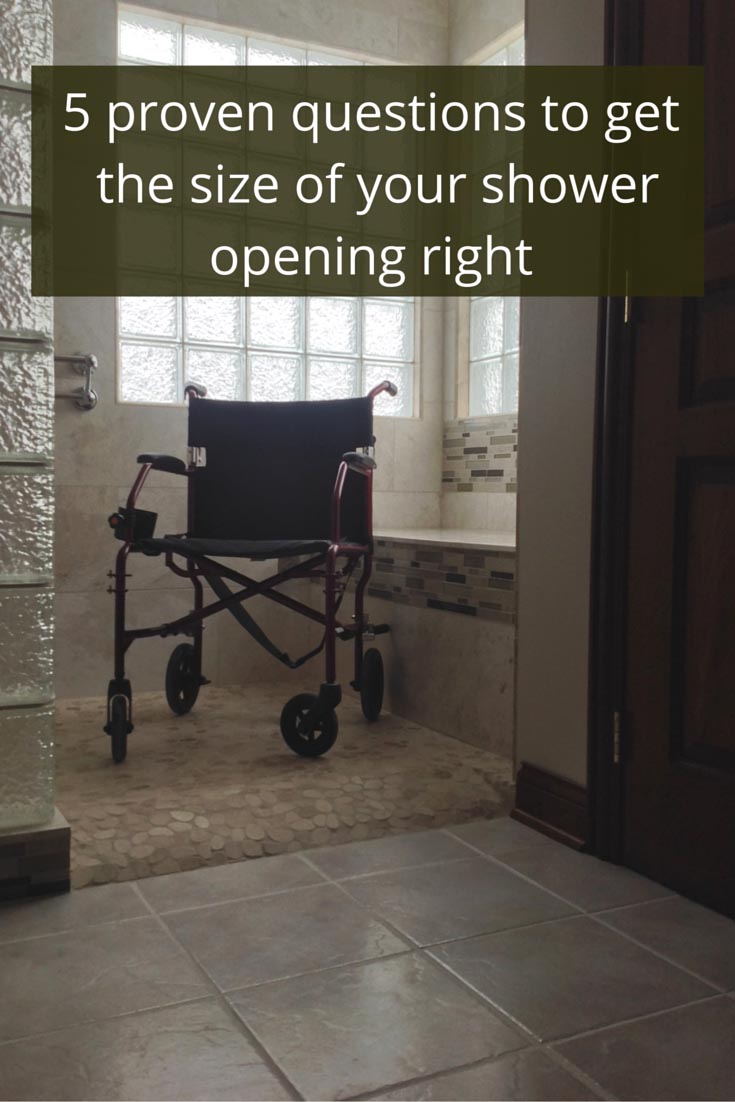
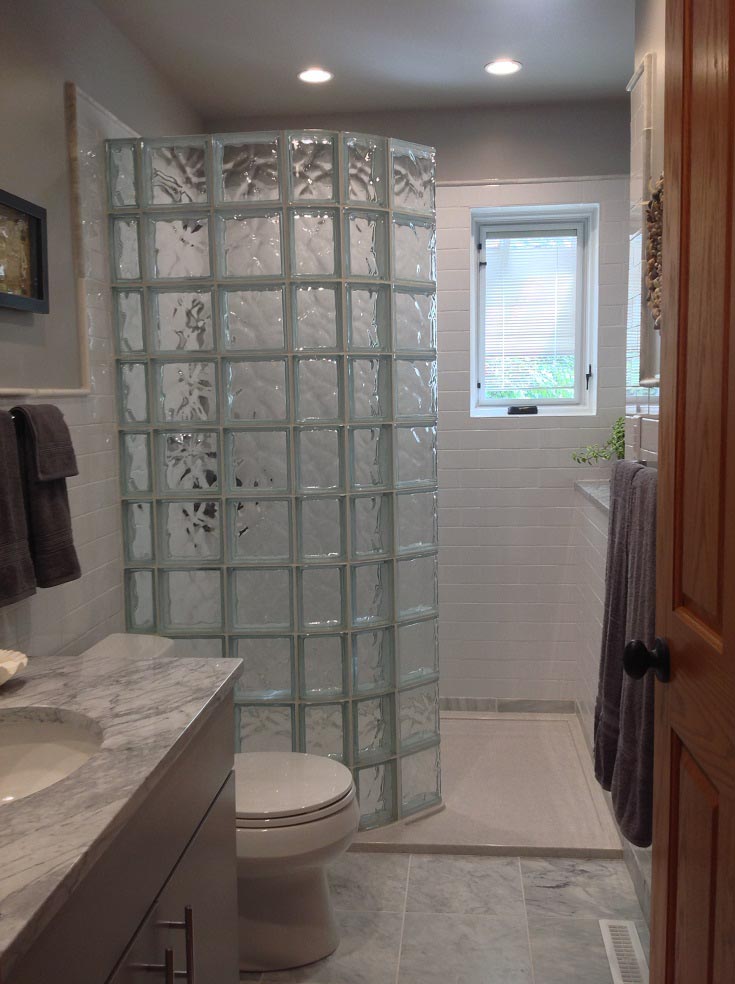
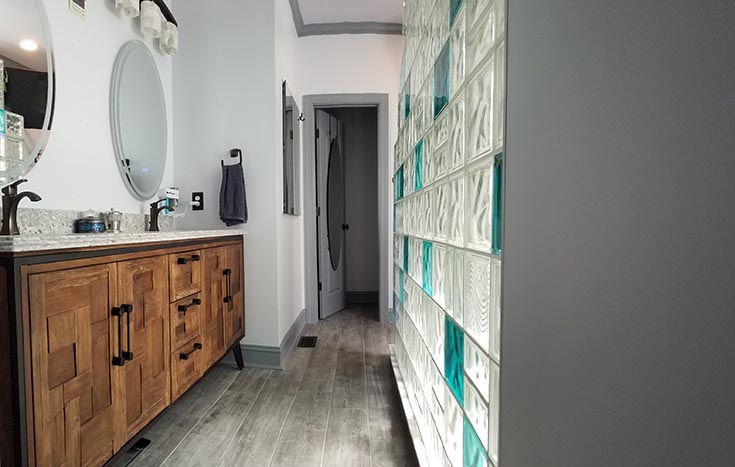
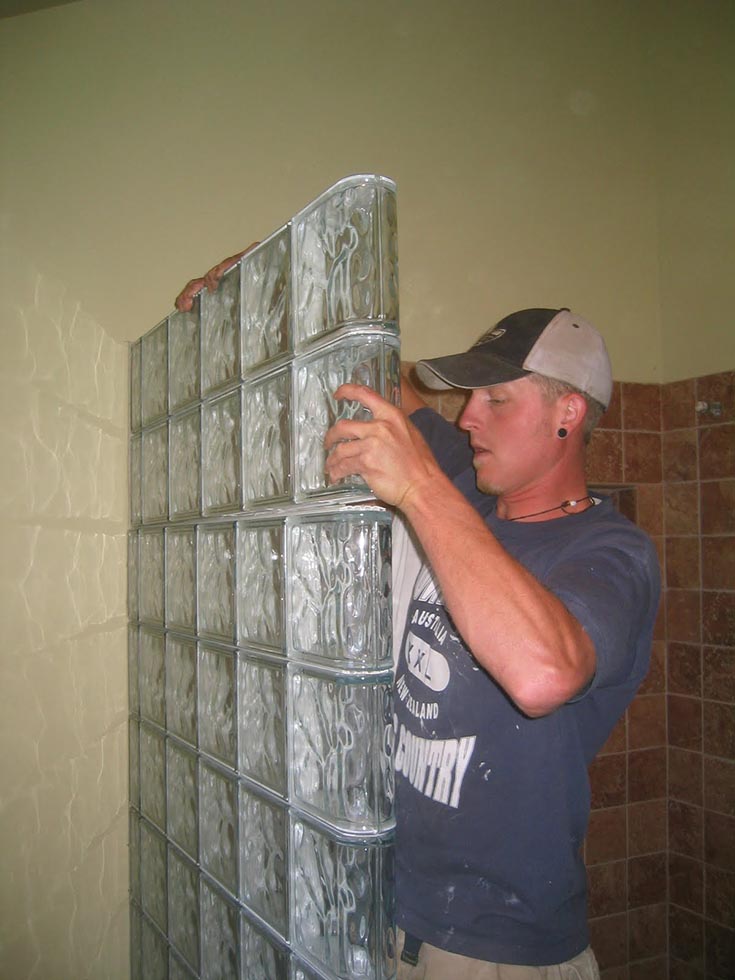
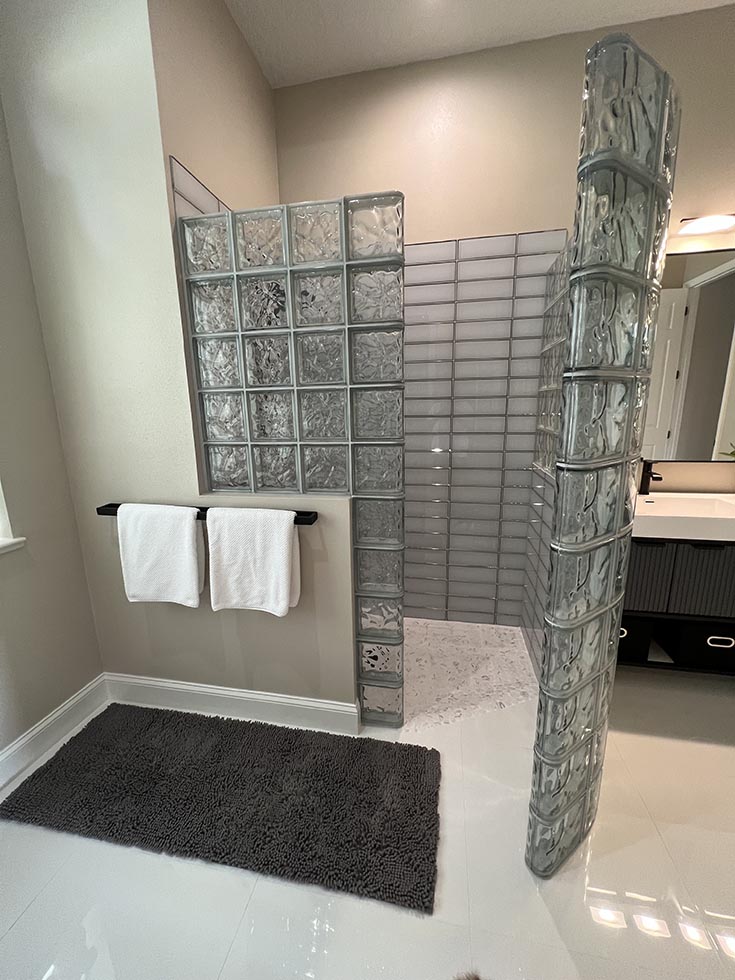
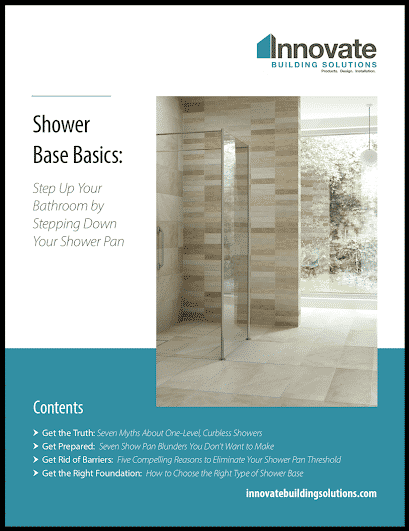
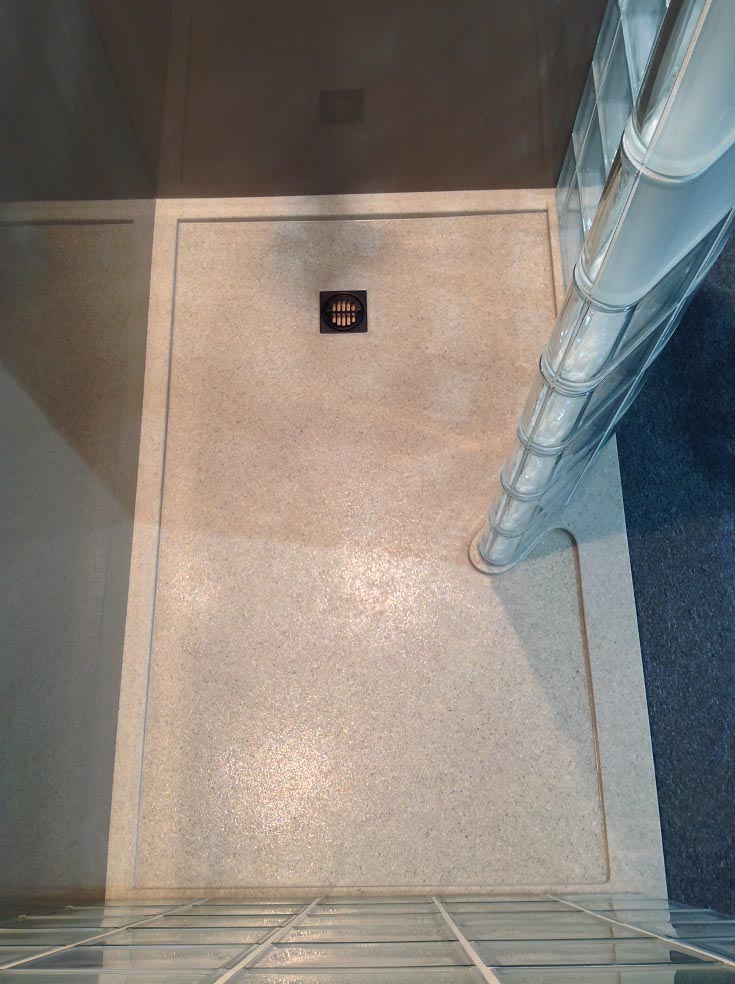
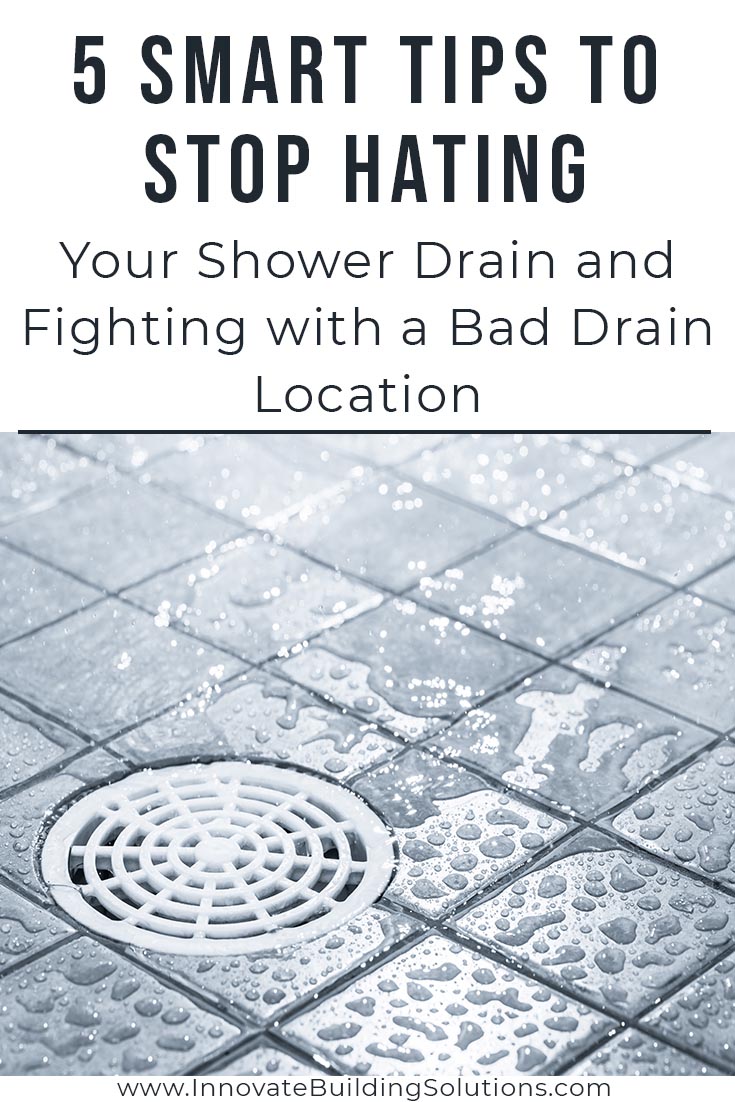
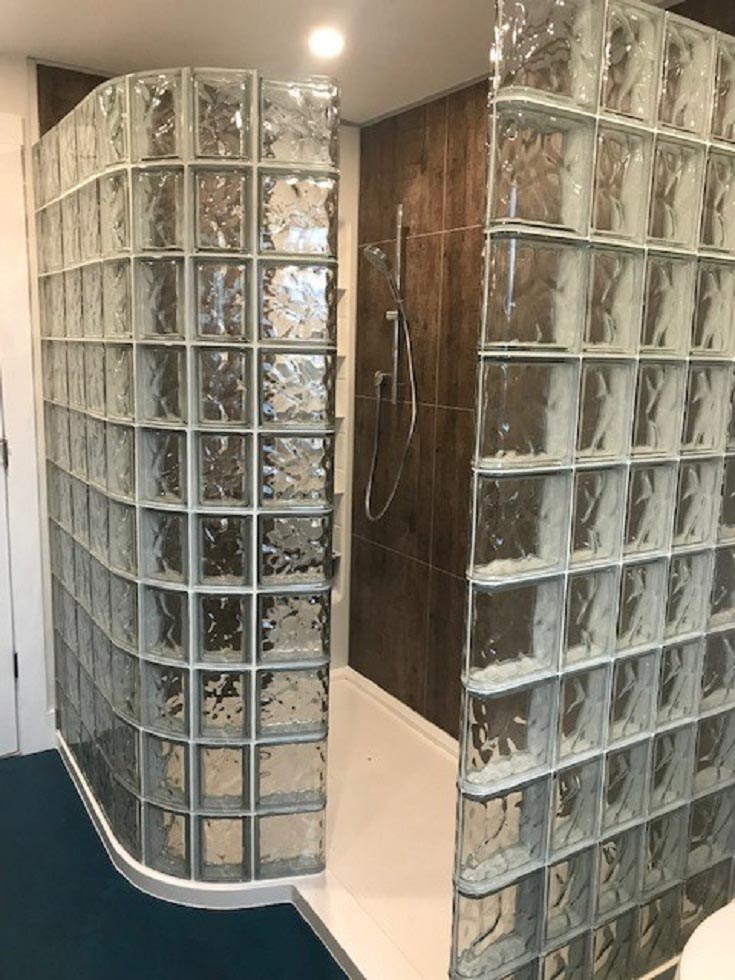
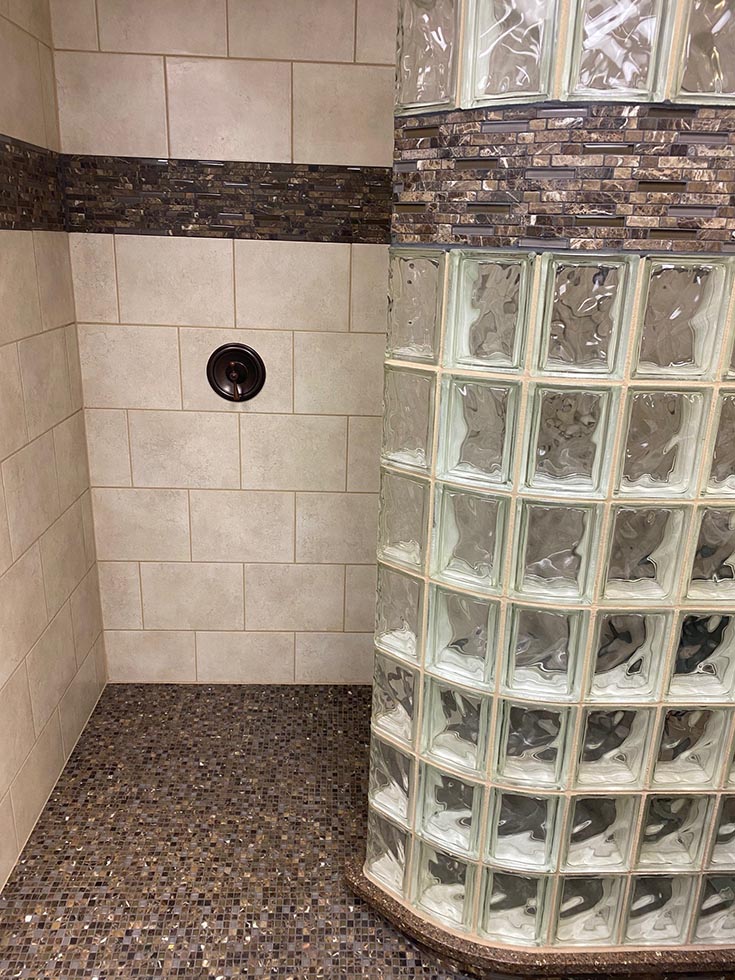
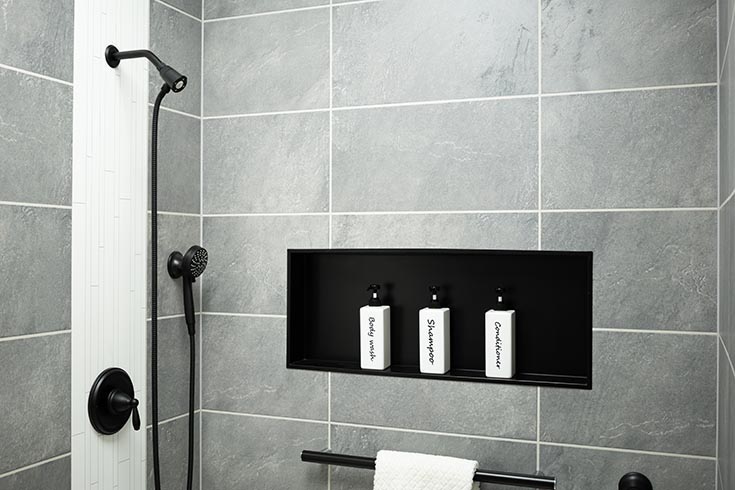
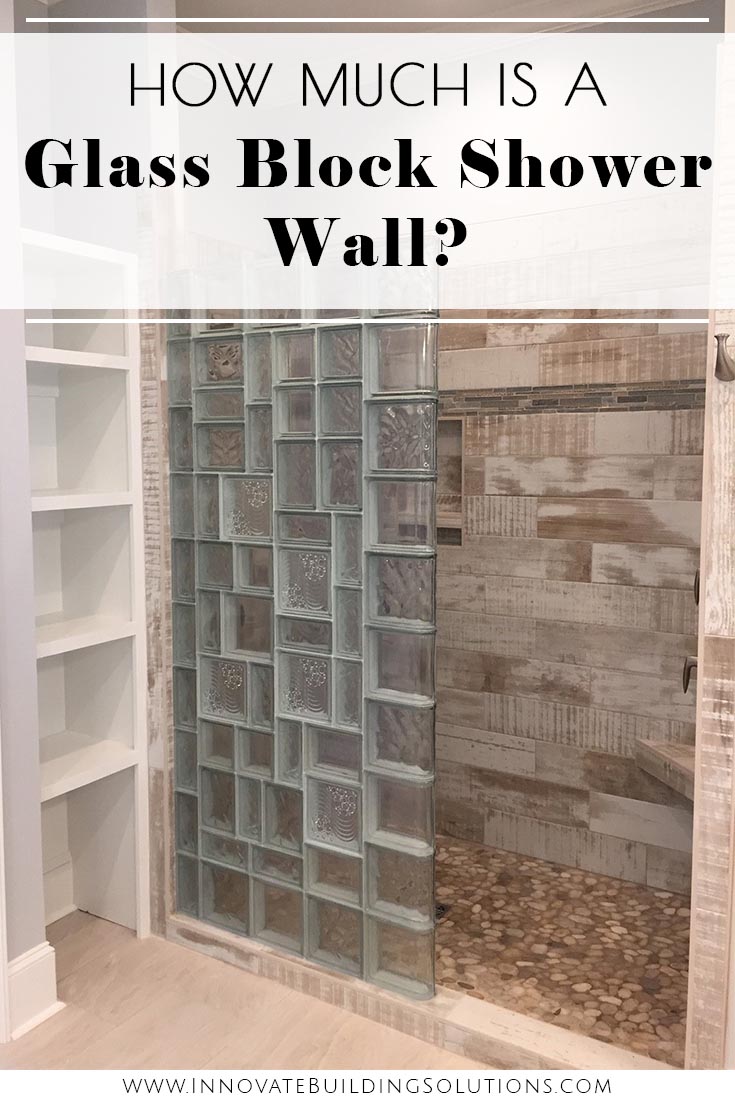
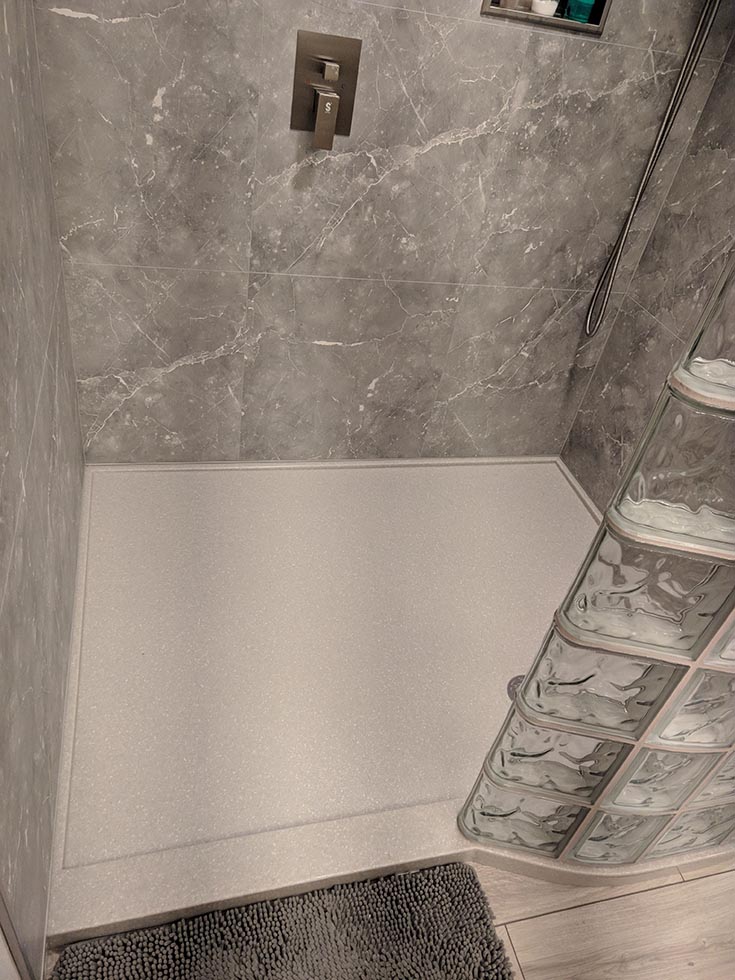
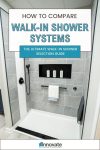

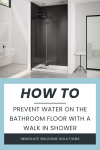

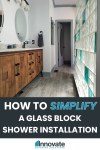




Mike Foti
Bruce – I’ll send you my email now – Mike
Bruce
I wish to email you photos of my shower, can you send me your address?